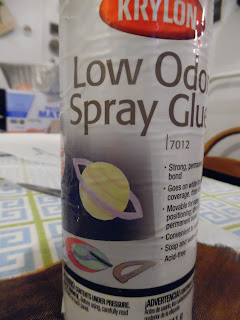The Passover dishes are all put away with a great deal of help from my husband and kids and my son's friend.
Shir haShirim, the Songs of Songs is usually read on Passover and one of the famous lines there is "for lo the winter is past.." I grew up in New England where a snowstorm in April is not unheard of. Usually, I think that my New York neighbors are weenies when they complain about the cold in April. But this year, despite the Song of Songs and despite the calendar day after day feels like late November.
The calendar does read April though so my next tallit is due fairly soon. This tallit is being made for a young man who was born in Ethiopia. I am using parts of an Ethiopian hand woven scarf in the tallit.
The text that is tying the tallit together comes from the teachings of Nachman of Bratslav.
The melody was written by Baruch Chait who was a member of the band The Rabbi's Sons which was the Orthodox version of The Beatles. Their music was even more part of the soundtrack of my life than the Beatles were
Y, the bar-mitzvah boy felt that the text was really meaningful to him. This was a text I could work with. I thought that I could have the second half of the phrase, the essential thing is not to be afraid resting on top of an image of a bridge. in general, I find that when the viewer can fill in the words from a familiar text the whole piece becomes more interesting, rather than simply using the entire quote.
So then I had to figure out which bridge to use. I decided to Google Ancient Ethiopian bridge.
Because the bridge photo was not wide enough for the atara, I printed it twice and connected the images end to end. I ironed the photos to the back of the Ethiopian fabric.
I then followed the lines of the bridge with my sewing machine.
Getting the lettering on the atara was a task that has to get done as well. Put a piece of tracing paper over the atara and sketched the letters out in pencil.
I then went over the lettering with a calligraphy pen and flipped the tracing paper over.
I fixed the paper to the back of the piece
and stitched the letters from the back.
I then chain stitched over the letters. I tried to have the letters follow the contour of the top of the bridge.
Most of the hard work has been done on the tallit. I am looking forward to completing the rest of it.
Shir haShirim, the Songs of Songs is usually read on Passover and one of the famous lines there is "for lo the winter is past.." I grew up in New England where a snowstorm in April is not unheard of. Usually, I think that my New York neighbors are weenies when they complain about the cold in April. But this year, despite the Song of Songs and despite the calendar day after day feels like late November.
The calendar does read April though so my next tallit is due fairly soon. This tallit is being made for a young man who was born in Ethiopia. I am using parts of an Ethiopian hand woven scarf in the tallit.
The text that is tying the tallit together comes from the teachings of Nachman of Bratslav.
The melody was written by Baruch Chait who was a member of the band The Rabbi's Sons which was the Orthodox version of The Beatles. Their music was even more part of the soundtrack of my life than the Beatles were
Y, the bar-mitzvah boy felt that the text was really meaningful to him. This was a text I could work with. I thought that I could have the second half of the phrase, the essential thing is not to be afraid resting on top of an image of a bridge. in general, I find that when the viewer can fill in the words from a familiar text the whole piece becomes more interesting, rather than simply using the entire quote.
So then I had to figure out which bridge to use. I decided to Google Ancient Ethiopian bridge.
I fell in love with this bridge. This is known as the portugese bridge I did a bit more research and discovered that it was built by Bene Israel masons, how perfect is that? Well, not exactly perfect because the bridge comes from a different area of Ethiopia than our bar-mitzvah boy but the family approved the use of this bridge.
My next task was figuring out how to transfer the image of the bridge to fabric. This was a task that I figured out while cooking for Passover.
I printed the image on to Chartex cloth backing, which is fabric impregnated with wax that was made to back photographs. I like it because it is stiff enough to go through the printer without balking.
I then followed the lines of the bridge with my sewing machine.
Getting the lettering on the atara was a task that has to get done as well. Put a piece of tracing paper over the atara and sketched the letters out in pencil.
I then went over the lettering with a calligraphy pen and flipped the tracing paper over.
I fixed the paper to the back of the piece
and stitched the letters from the back.
Once the letters had been stitched I ripped away the tracing paper.
Most of the hard work has been done on the tallit. I am looking forward to completing the rest of it.








Comments
Post a Comment
I love hearing from my readers. I moderate comments to weed out bots.It may take a little while for your comment to appear.